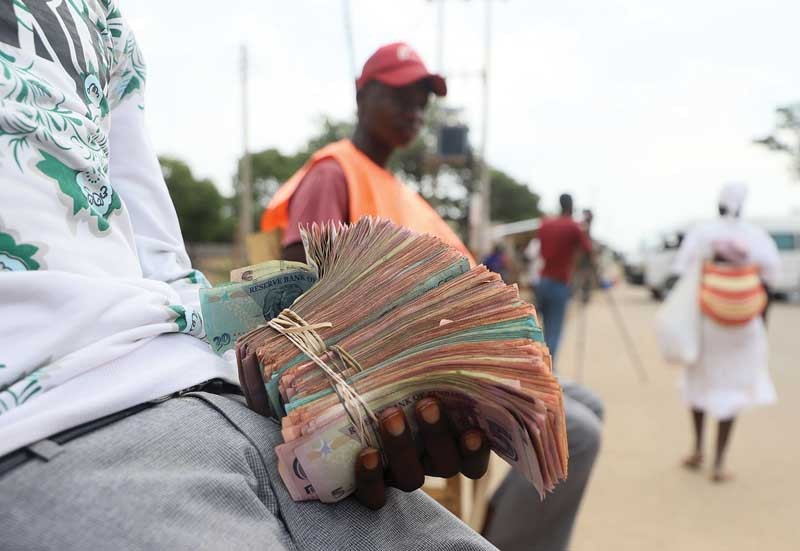
Y
OU know we are in the election season when the Zanu PF government starts lauding itself over non-existent economic improvements.
The latest self-praise comes from the Treasury, the Reserve Bank of Zimbabwe and other government officials that prices of basic goods are coming down as a result of the Zimbabwe dollar “stabilising”.
This is because the greenback used to sell for as high as $1 000 in the local currency on the parallel market, but has since settled around $800 after tighter fiscal and monetary measures.
The measures put in place by Treasury and monetary authorities include suspending payments to government suppliers, a 120-percentage point bank interest rate hike to 200% and doubling the capital gains tax to 40% on stocks sold before 270 days. Other measures introduced were selling gold coins in local currency and using Zimbabwe dollar balances to service the huge forex auction backlog.
The effect of these measures has been to significantly reduce Zimbabwe dollars on the market which in turn has led the local currency to seemingly “stabilise” on the parallel forex market, a feat which critics warn is temporary because the government still has to honour its obligations to suppliers.
Well, if we go back to our economics, there has been significant demand for the United States dollar as it is a more stable currency.
This is because the economy has seen low activity as a result of poor consumer spending, power cuts, foreign currency shortages, water shortages, unfriendly business policies, corruption, low business and consumer confidence and high taxes, to name a few.
- Corruption Watch: Get scared, 2023 is coming
- Corruption Watch: Get scared, 2023 is coming
- Letters: Ensuring Africa’s food security through availability of quality seeds
- Is military's involvement in politics compatible with democracy?
Keep Reading
As a result, the Zimbabwe dollar has continued to depreciate.
The only problem is the levels of forex in the formal market are seriously depressed owing to mostly poor foreign direct investment into the country and zero confidence from informal sector holders of foreign currency who refuse to circulate the money in official channels.
Resultantly and naturally, the economy has become inflationary as there are no adequate levels of United States dollars circulating in the formal sector to support the Zimbabwe dollar’s liquidity.
Hence, Treasury and the central bank intervened to protect the lacklustre Zimbabwe dollar.
So, while the Zimbabwe dollar is seemingly “appreciating”, it isn’t, because the same challenges that weakened it are still at play.
This is why organisations like the United States Agency for International Development, consumer bodies and retailers are reporting increased inflationary pressures and a decline in consumer demand.
It is also why on the formal forex market, the United States dollar continues gaining against the Zimbabwe dollar. Currently, the greenback is trading for about $604 to the local currency, down from $159,34 before Treasury and central bank interventions.
While there have been some decreases in the price of selected goods such as cooking oil and milk, that is not enough to point to an overall improvement looking at the total consumer basket.
Since March 2019, the Zimbabwe National Statistics Agency (ZimStat) has been publishing a new Consumer Price Index (CPI) with new weights and a classification. According to ZimStat, the classification of individual consumption by purpose resulted in the creation of a new cataloguing resulting in 83 classes, 41 groups and 12 divisions.
As a result, the number of items in the CPI basket is now 495.
Unless more than half or all of these items drop in price, then any talk of any improvement is heresay and frankly insulting for a populace whose half is living in extreme poverty.
We understand this is a period of politicking for Zanu PF, but the party must not stretch the truth, it is embarrassing.











